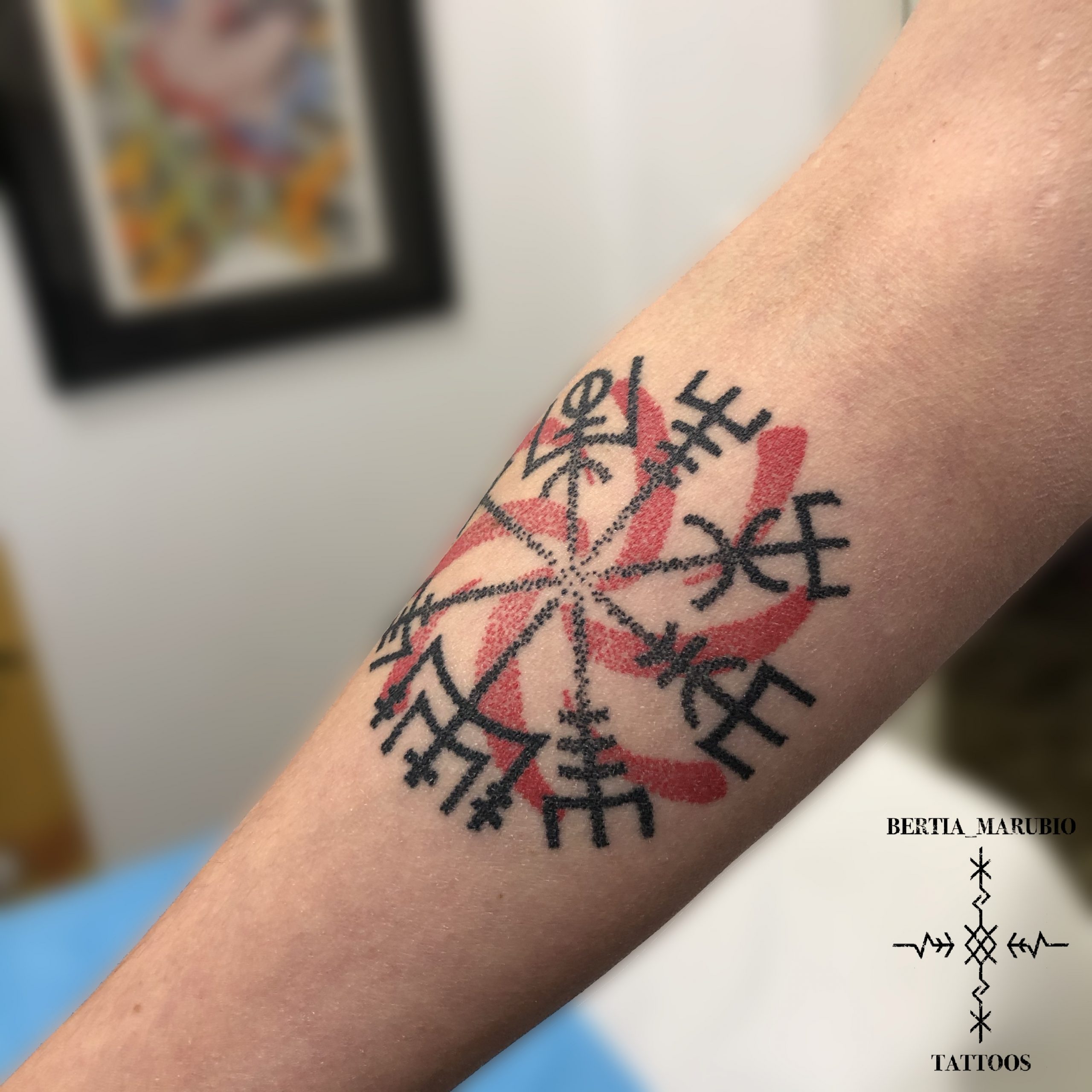"If anyone carries this symbol with them, they will never lose their way in a storm or bad weather, even if they travel a path unknown to them." -Huld Manuscript
The Vegvisir is an Icelandic mark, much loved and discussed today, I will try here to give you an introduction to this ancient symbol...
We do not know the precise origin of Vegvisir, it was found for the first time in an Icelandic grimoire dated around 1860, the Huld manuscript and, even if it is almost certainly older (it is thought to have late medieval origin) there is no evidence that can testify to its use by the Vikings...
The name "Vegvisir" owes its roots to the words "Vegur" which means "road", "path" and "Vísir" which means "indication", "guide".
The manuscript on which it was found shows this text under the symbol:
"Beri maður stafi þessa á sér villist maður ekki í hríðum né vondu veðri þó ókunnugur sá"
"If anyone carries this symbol with them, they will never lose their way in a storm or bad weather, even if they travel a path unknown to them."
These data, however, are not sufficient to fully understand the history of this symbol and the reasons that prompted people to pass it on to us.
The origin of Vegvisir is in fact sought in the history of Iceland and in the social evolution that pagan rites have had in those lands...
The colonization of Iceland began in the year 874, when 435 Vikings settled there to escape the ambitions of the king of Norway Harald Fairhair, and in 930, when the Alþingi, the assembly of the Free State of Iceland, was founded.
Christianity became the official religion in Iceland around the year 1000, but paganism was not eradicated and mixed with Christianity, mixing rituals and beliefs, so much so that some spells used Christian symbols.
In the 1500s, with the advent of the Lutheran Reformation, the phenomenon of witch hunts grew in intensity in Northern Europe and, in 1625, under Danish influence, Iceland killed its first witch, a man.
Over the next 50 years, about 120 witchcraft trials were held in Iceland.
Of the 22 Icelanders burned on the pyre, only one woman is counted and the peculiarity is that the pyres consisted of the goods of the condemned: the trees were too rare and precious in Iceland to be wasted in the fires.
A factor that deserves attention is the link between "witchcraft" and runic characters: in the seventeenth century the presence of runes, a script no longer understood and recognized by most of the population, was directly associated with evil and witchcraft.
While in the rest of Europe they looked for the "signs of the devil", in Iceland they looked for runic characters as irrefutable proofs of relationship with the devil.
Therefore it became necessary, from the seventeenth century, to put these symbols on paper trying to hide any knowledge of this type, until then passed down orally.
It was from this climate that the Icelandic grimoires were born and, in the seals they kept, we also find the Vegvisir.
Made famous in the 90s by the singer Björk, perhaps the first celebrity to have it tattooed on her, this seal has seen its fame grow to become, today, a well-known symbol among fans of the genre.
It is often discussed among history buffs, as if to be put at the center of a "competition" between those who have more or better cultural acquaintances, this is, in my opinion, rather stupid.
Culture and knowledge cannot be a source of discord because they are the basis for growth.
Knowledge should never be elitist.





